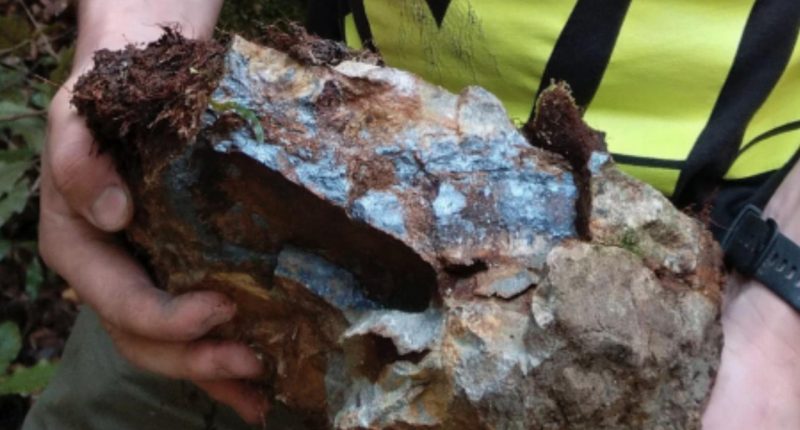Thorough exploration targeting techniques are crucial for attaining ultimate project success.
Perth-based explorer Siren Gold (SNG) is making the most of its mining exploration phase, defining gold and antimony mineralisation across the Reefton and Lyell goldfields, and the Sams Creek porphyry dyke in New Zealand.
The company boasts a strategic package of tenements across these areas, which lie in the heart of New Zealand’s South Island and span 1100 square kilometres across the total project area.
When it comes to modern exploration methods, Siren utilises advanced soil sampling exploration techniques that have seen little use in the area previously, as well as conventional rock chip sampling, trenching and pitting, and drilling across specific target areas.
In December of last year, SNG Executive Chair Brian Rodan mentioned that, with adequate funding, the company would use 2023 to make the most of opportunities to grow its gold resource across the Reefton Goldfield area.
“…That is Siren Gold’s ongoing strategy; to deliver quality high-grade ounces to the company’s resource book from our discoveries at the Reefton, Lyell and Sam’s Creek goldfields in the South Island of New Zealand,” he said.
The company has followed through on its promise thus far, with upgrades to the global resource at its Supreme Gold project last month which included the recently acquired Cumberland prospect, as well as its Big River, Alexander River, and Sams Creek projects.
The company’s total indicated mineral resource estimate (MRE) stands at 1.2 million ounces (Moz) of gold at 3.1 grams per tonne (g/t).
Furthermore, SNG’s Auld Creek, Reefton South, and Lyell Goldfield targets are set to see advanced exploration efforts in the vastly under-explored South Island this year.

Mining and exploration in NZ’s South Island
New Zealand is home to extensive unexplored oil, gas, and natural mineral resources, including coal, gold, antimony, and silver.
The Reefton Goldfields is one of the nation’s many impressive geological locations, with extensive historical explorations carried out from its discovery in 1886 to 1942, however, very little of the entire field has ever been subject to modern exploration techniques.
Historical gold production before World War II along the Reefton Goldfields defined more than two million ounces of gold at 16 g/t and high grades of antimony – vital to the world’s clean energy transition.
“Antimony is now a major component of the critical metals industry, being used in, amongst other purposes, the production of armaments, as well as solar panels, wind turbines and electric vehicle batteries,” Mr Rodan said.
“Currently, over 85 per cent of the world’s antimony supply is being sourced outside of Western Countries and this could well highlight the potential for supply chain-related price increases over the coming years.”
Reefton South, one of Siren’s early-stage prospects, is west of the historical Globe-Progress Mine and south of the Blackwater Mine.
The Globe Progress mine has produced more than 1.1 Moz of gold and is the largest mine in the Reefton Goldfield, followed by Blackwater with an MRE of 740,000 tonnes (Koz) at 14.2 g/t of gold.
The company’s Cumberland permit joins the Big River, Golden Point, and Reefton South permits before overlapping Federation Mining’s gold permit, which is currently being developed into an underground mine.
Siren’s Big River project can be found 15 kilometres southeast of the Reefton Goldfields, masking areas of the historic Big River mine that produced an exceptional 136,000 ounces of gold.
The company is assessing six known gold mineralised shoots in this area and has defined two of these shoots so far, with an inferred MRE for Big River sitting at 105 Koz of 3.9 g/t of gold at a 1.5g/t cut-off.
Siren’s project success
Siren’s vast project base lies across many highly staked areas in the South Island of New Zealand, which the company is primed to continue advancing through its exploration methods.
SNG made further acquisitions at the end of last year regarding its Cumberland prospect, which now covers both the northern and southern areas of the expired Globe-Progress mining permit.

“The Cumberland tenement package lies in the central portion of the 35-kilometre-long structural corridor that extends Siren’s very promising gold-stibnite mineralisation a further 10 kilometres from the promising Auld Creek prospect to Big River,” Mr Rodan said.
SNG also purchased the Sams Creek project in October of last year and has since remodelled the prospect into an underground mine, recently recording a fresh MRE of 825 Koz at 2.8 g/t of gold.

The company’s Alexander River mine, residing 26 kilometres southeast of the Reefton Goldfields, has undergone numerous drill tests as well as a 1.2-kilometre quartz reef trenching, defining up to 8 g/t of gold across an 800-metre strike and four metres wide.

In May, SNG struck its first gold intersection from fraternal and bonanza grade shoots at Auld Creek, recovering 20.8 metres of 5.9 g/t of gold and 2.6 per cent antimony for a 12.0 g/t gold equivalent from its fraternal shoot.
Three trenches ending in mineralisation were extended, increasing gold intersections to 19.7 g/t across 8.4 metres and 5.3 per cent antimony for a 32 g/t gold equivalent, and SNG continues to define more targets with two new trenches intersecting 4.5 g/t of gold over six metres.
And, at Mt Lyell North, the company recently defined a one-kilometre-long gold anomaly as a “significant” discovery, with visible gold revealed at the northwest end tapping into the United Reed location.
At the United Victory Reef channel, the company sampled a significant 19.1g/t of gold, which included a 0.4-metre quartz reef with visible gold assaying 39.0g/t, surrounded by disseminated arsenopyrite mineralisation which also assayed 42.0g/t of gold.
Lastly, Siren’s Reefton South, 333-square kilometre tenement, is considered a 20-kilometre extension of the Reefton Goldfields due to its abundance of unexplored Greenland group rocks lying just beneath the surface.
What’s next?
The company recently announced that it plans to grow its exploration targets with continued drill-focused exploration at the company’s key projects over the next two years. Additionally, it outlined that exploration over the next 12 months would focus on Auld Creek, Cumberland, Lyell, Sams Creek, Alexander River and Big River.
This places Siren in an advantageous position to reap the high-grade gold and antimony mineralised rewards hiding within the Reefton, Lyell, and Sam’s Creek goldfields.








